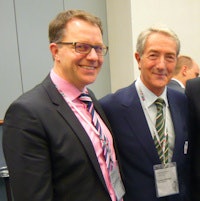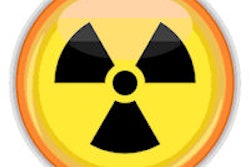
In a new joint white paper, the European Society of Radiology (ESR) and the European Respiratory Society (ERS) have added their support to lung cancer screening in comprehensive, quality-assured programs within a clinical trial or in routine clinical practice at certified multidisciplinary facilities.
Although lung cancer screening using low-dose CT (LDCT) reduces mortality and leading U.S. medical societies recommend large-scale screening for high-risk individuals, no lung cancer screening recommendations or reimbursed screening programs exist in Europe. This situation prompted the two societies to produce the document, which was published online last week by European Radiology. The lead authors were Dr. Hans-Ulrich Kauczor, professor and chairman of radiology at the University Hospital Heidelberg in Germany, and Dr. Lorenzo Bonomo, professor and chairman of radiology at the A. Gemelli University Hospital in Rome.
 For lung cancer screening to succeed, action is vital to boost quality, outcome, and cost-effectiveness, according to Dr. Hans-Ulrich Kauczor (left) and Dr. Lorenzo Bonomo.
For lung cancer screening to succeed, action is vital to boost quality, outcome, and cost-effectiveness, according to Dr. Hans-Ulrich Kauczor (left) and Dr. Lorenzo Bonomo.The NEderlands-Leuvens Screening ONderzoek (NELSON) trial will be finalized by the end of 2015 and will add insight, probably with a more accurate screening algorithm and lower rate of false positivity, they explained. The Dutch-Belgian NELSON trial is the largest European, randomized controlled trial with at-risk participants based on age and smoking history randomly selected from population registries. The trial involves 7,577 participants in the CT screening arm and compares them with 7,871 participants in the control arm. Apart from a smoking cessation program, no intervention was offered in the control arm. The first outcome data are expected in 2016.
"As the results of this large European study are pending and the screening algorithms used in published studies have not been universal, there are numerous issues that should be taken into consideration before starting an LDCT screening program in Europe," the authors wrote.
Based on the results and experience of completed and ongoing lung cancer screening activities, the authors suggest the following nine minimum requirements for implementing screening:
Accredited medical centers with multidisciplinary expertise and access to trained professionals, including radiologists, pulmonologists, oncologists, pathologists, and chest surgeons.
Strong smoking-cessation program and experienced staff providing effective cessation and long-term abstinence advice.
Longitudinal, comprehensive screening program throughout the age interval of eligibility, covering the complete protocol, including work-up, follow-up, and potential re-entry, also offering an appropriate expectation management. Single-round screening is discouraged.
Inclusion criteria: between 55 and 80 years, smoking history of at least 30 pack-years, and current smoker or ex-smoker who has quit smoking within the last 15 years.
Exclusion criteria: comorbidities precluding curative therapy and lack of consent to undergo curative therapy.
Standardized operating procedures for image acquisition, nodule evaluation, positive screening results and their management, monitoring of false-positive results, and rate of iatrogenic complications, and appropriate follow-up.
Computer-assisted nodule evaluation and documentation. Identical measurement software is required for follow-up. Volumetric measurements are preferred over diameter measurements.
Multidetector low-dose CT with at least 16 detector rows providing isotropic high spatial resolution (slice thickness of about 1 mm with an increment of 0.7 mm) and an effective dose between 1 mSv for normal-sized individuals and not more than 3 mSv for obese individuals.
Collection and submission of lung cancer screening data to a lung cancer screening registry. A European lung cancer screening registry, including biobank and image bank, should be created.
Furthermore, the authors recommend implementing measures to boost quality, outcome, and cost-effectiveness:
Increase the pretest probability by using a risk model and considering additional risk factors.
Reduce the effective radiation dose to less than 1 mSv per CT examination for all participants.
Use volumetric measurements for the assessment of growth rate (tumor doubling time) in order to reduce the rate of false positives.
Use computer-assisted systems for automated detection, optimized measurements, and follow-up, providing structured reports on nodule volume, localization, phenotype, and standard operating procedure-based suggestions for further management plan.
Adapt screening intervals based on refined-risk models.
Include additional CT findings such as chronic obstructive pulmonary disease (COPD) and vascular calcification.
Include and study biomarkers to better define screening subgroups and refine nodule management.
"All these requirements should be adjusted to the regional infrastructure and healthcare system, in order to exactly define eligibility using a risk model, nodule management, and a quality assurance plan," the authors stated. "The establishment of a central registry, including a biobank and an image bank, and preferably on a European level, is strongly encouraged."
Although the NELSON trial results are pending, published data are available from smaller, randomized controlled trials from Denmark (DLST) and Italy (Italung, DANTE, and MILD). These trials involved approximately 1,000 to 2,000 patients in each arm. The results suggest no advantage for lung cancer screening; in fact, DLST and MILD even found a trend toward higher mortality in the yearly CT screening arms, they pointed out. Other current randomized controlled trials are the German Lung Screening and Intervention (LUSI) trial and the U.K. Lung Screening (UKLS) trial.
The white paper was approved by the ESR Executive Council in February 2015 and by the ERS Steering Committee on 12 March 2015. The other authors were Drs. Mina Gaga, Kristiaan Nackaerts, Nir Peled, Mathias Prokop, Martine Remy-Jardin, Oyunbileg von Stackelberg, and Jean-Paul Sculier.



















